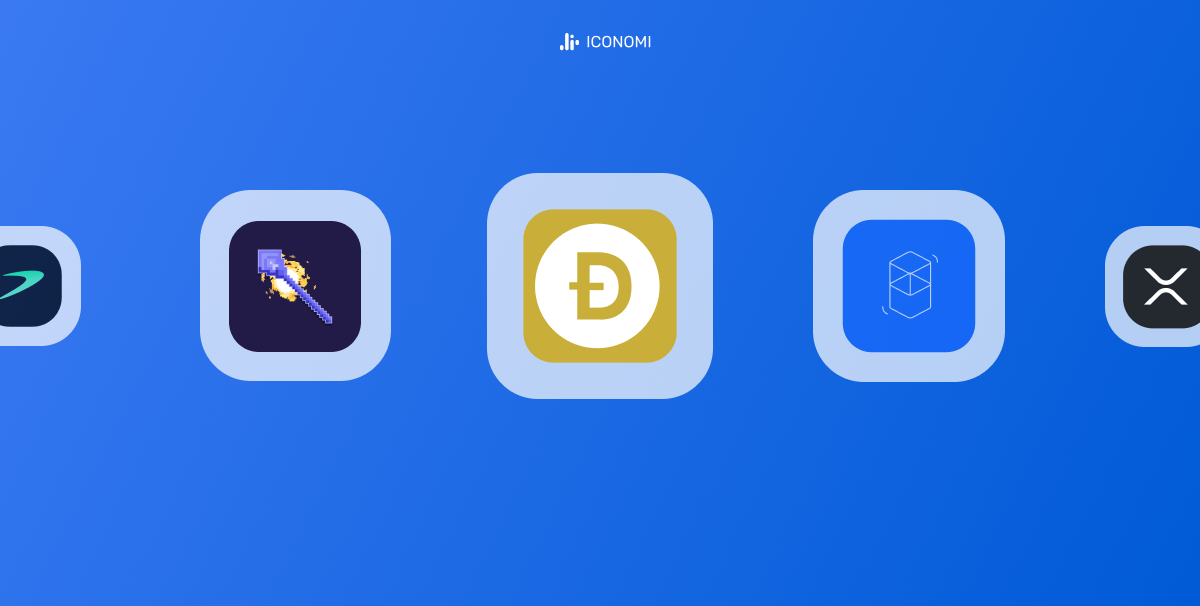
How We List Assets At ICONOMI
ICONOMI as a crypto service provider, focuses on long-term investments, which is reflected in our tokens listing policy. ICONOMI’s users can request a crypto asset to be listed on the platform, and in this way, initiate a listing process.
You can do this via our Telegram community group, a support ticket to Helpcenter, or by using our official asset listing form. Each proposed crypto token gets put on our “proposed list”, where it sits until it is listed, rejected or put into “further monitoring” if not yet eligible. We periodically check all proposed assets and list them when they become eligible. As of June 10th, 58 assets are monitored to potentially be listed.
Having our users’ interests in mind, we adhere to some key principles guiding us when considering all the above. These principles are:
- Token liquidity
- Token compliance with regulatory requirements
- Prevention of market manipulation
Having low market cap assets would not only lead to a bad user experience while buying/selling a token, but it could also lead to scenarios where the assets themselves become non-tradable, reducing the actual value of users’ portfolios.
Listing requirements
We perform extensive due diligence on all assets proposed, managed in three steps:
Stage 1: Market
Most of the proposed assets get “stuck” in this stage, but we monitor them on a weekly basis to see if they fit our requirements. To pass this stage, an asset must:
- Be tradable on at least two partnered exchanges
- Have adequate volume on those exchanges
- Meet those requirements for a longer period of time
If the asset is only tradable on two partnered exchanges, it must have more volume than if it is on three exchanges.
For example, if it is tradable on two exchanges, it must have at least $5 million of 24-hour volume on each. If it is tradable on three exchanges, it must have at least $1 million of 24-hour volume on each.
The above-provided volume numbers serve only as an example, as they change depending on the market conditions. A $2 million daily volume can be a lot in a bear market but very little in a bull run. Our parameters are flexible to allow for such changes, and we take into account market dynamics when listing.
When an asset passes this step, it is moved to:
Stage 2: Compliance
Our compliance team performs a background check on the asset to find any potential issues or red flags. For instance, they look at the project’s whitepaper, any audits done about it, security hacks, legal documentation, etc. They also check the team behind the project, looking for any bad actors, previous scams or any other red flags.
An asset can receive three possible conclusions from the compliance team:
- No issues found: If it passes all checks, it moves to the next part of the listing process
- Enhanced monitoring: The asset moves to the next part of the listing process but is reviewed often after it is listed.
- Rejected: The team made the decision to reject the asset. As such, it moves back to the first step until more information is known about the project, or any recorded issues get resolved.
Stage 3: Listing
Once both the market and the compliance team approve the asset, it moves to our technical team for listing. There are rarely any issues at this step, but sometimes our engine might have some problems trading a specific asset. These issues are then grouped together with the technical team’s other tasks within the company.
Once all three of these stages have been completed, the asset moves to our marketing team to prepare the needed material and propose and execute a listing plan. An asset does not get stopped at this stage but can be delayed by a day or two, depending on other activities.
Asset Listing Considerations
We only work with centralised exchanges. And, with that, we do not have free reign to trade with them fully. Some exchanges work better for us than others, and then we have to be wary of any potential hacks, vulnerabilities, or issues with them. For instance, we did not work with FTX, despite them being one of the bigger centralised exchanges.
The volume must be stable for a long enough period so we can be as sure as we can that the asset won’t cause issues. An asset can be well within our parameters one day and then fall out of them by a large margin the next day. In such cases, we monitor the asset’s volume over the course of a few weeks, or even a month or more, to see if it consistently passes our requirements.
We must also be wary of listing hype. If we take the current largest non-index Strategy, Diversitas, for example:
If the Strategy allocates just 5% of the structure to an asset, that would be an immediate $500,000 trade. That could lead to a big price impact for the asset, as a large chunk of its overall volume would be traded from the side of our customers. Additionally, there could be scenarios where there is no liquidity to even complete the trades, leading to the rebalance being stuck in limbo.
A similar process is also in place to potentially delist currently listed tokens from the platform. There are two phases of delisting a token; “soft-delisting” - a token can not be added to a Crypto Strategy anymore, or in rare cases “hard-delisting” - a token is converted to BTC or stablecoin to prevent illiquidity.
We hope that this blog post gives some insight into our listing process.

